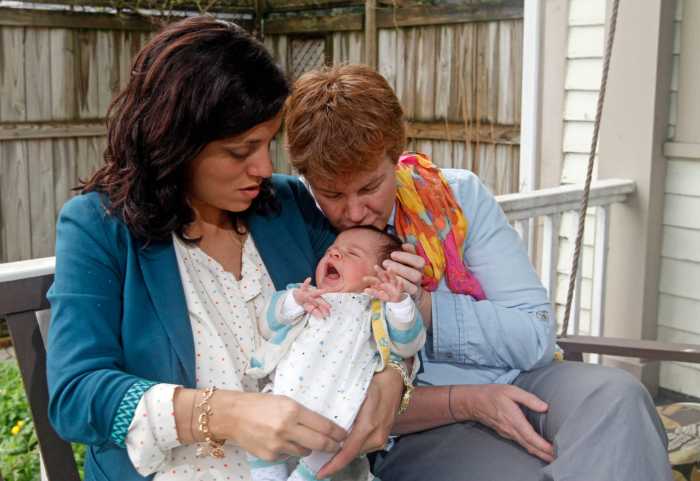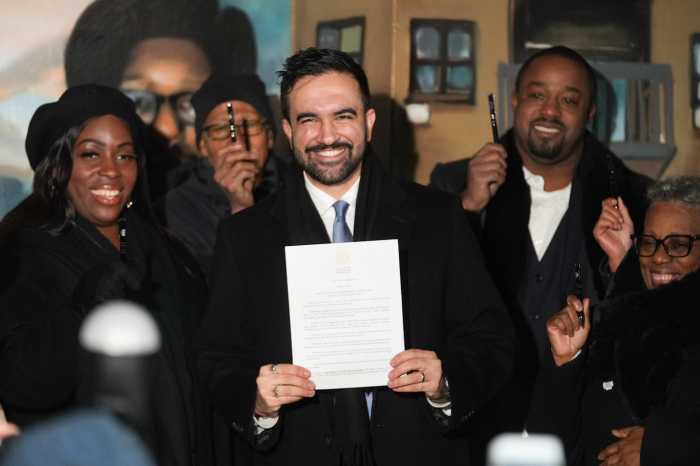“Ride or Die” — a Japanese-based lesbian thriller playing on Netflix — is a story of roads. Its first third repeats the image of two women driving through a garishly lit cityscape. These shots resemble the highly stylized photography of street scenes which can be found all over Instagram. They make no bones about the degree to which they’re distorted, with color and lighting altered in post-production for effect. When the couple is in a more peaceful place, they can drive through more inviting surroundings. The sun is shining, the road is surrounded by greenery or water, and pop ballads play on the soundtrack. At one point, the camera pulls further and further back to show the couple driving on an enormous bridge over the ocean, as we realize that it is mounted on a drone. The change in tone is effective at communicating the characters’ circumstances, although the reliance on music makes things feel like a pop video.
But to return to its beginning, “Ride or Die,” adapted from Ching Nakamura’s manga, initially plays like a ‘90s erotic thriller. In a long take, a middle-aged man and pink-haired woman, Nanae (Honami Sato) meet in a neon-lit bar and head out for a hookup, with him mistaking her for a sex worker. A few clues suggest that this is her fantasy, not his.
“It excites me when I have sex in a house tidied up by someone else’s wife,” Nanae says. She gets on top during sex and expresses her desire for his wife, Rei (Kiko Mizuhara). When she kills the man by stabbing him in the neck, she proves that she’s not playing around. She’s serving as an avenging angel to Rei, whose body is covered in bruises from his fists.
Rei and Nanae went to school together, and the film tells the story of the latter’s lifelong attraction to Nane, as well as the class conflict that kept them divided, moving back and forth in time. Upon learning about Rei’s suffering at the hands of her husband, Nanae felt that she had to come forward and save the woman she’s loved since adolescence. But Rei mentioned her abuse casually, never dreaming that Nanae would go so far as killing her husband. While Rei doesn’t think of herself as a lesbian, the two women leave Tokyo and travel further into the countryside, growing closer.
Ryuichi Hiroki began his career in Japan’s softcore porn industry, including a trio of adult films about gay men. While he moved over to “mainstream” cinema in the late ‘80s, his interest in themes like sex work and BDSM remained. Given that Netflix produced and distributed “Ride or Die” worldwide, it’s his highest-profile film ever, but back in the 2000s, Hiroki films like “Vibrator” regularly played the New York Asian Film Festival.
“Ride or Die” contains some nudity and explicit sex scenes, shot in a manner that would please heterosexual men. When Rai washes the blood off herself after killing Nanae’s husband, the camera travels up her nude body. But the extended scene where Rei and Nanae have sex for the first time isn’t a piece of titillation. It communicates their relationship’s dynamics powerfully. Rei finds herself startled that Nanae, who has been reticent to embrace lesbian sex, is willing to actively pleasure her but gives into her excitement.
The fairly vanilla love songs played throughout “Ride or Die” start to feel like an ironic comment on its darkly obsessive story. Rei nurses a crush on Nanae for years, sacrificing a white-collar career as a plastic surgeon to save her from violence. Yet this gesture is rooted in her libido as much as hatred of male aggression towards women. Nanae never called on her to commit murder on her behalf, and very understandably, she’s shook by Rei’s actions. The urban/rural dichotomy the film sets up also looks ironic. (Obviously, the contrast between the artifice of the film’s view of city life and its later sunny nature imagery is a construct.) Hiding out with Rei’s brother in the country proves to be a false refuge.
“Ride or Die” does not have much use for clear psychology or characters who are likable and relatable in a simplistic manner. It shows women risking their lives in the service of dark romanticism. But the “normal” Japanese society on view looks worse. Our very brief glimpse of Nanae’s life as a plastic surgeon shows her operating on a woman who wants to get her eyelids altered to look more “western.” Men play a small role in “Ride or Die,” and they’re patronizing mansplainers at best, as the male attitude that all women are basically sex workers recurs throughout the film. But instead of simply turning Rei into a femme fatale, the film slows down after the murder and takes its time developing the duo as complex characters. The road’s promise of freedom gets narrower and narrower, but “Ride or Die” also delivers on it.
“Ride or Die” | Directed by Ryuichi Hiroki | In Japanese with English subtitles | Netflix
To sign up for the Gay City News email newsletter, visit gaycitynews.com/newsletter



































